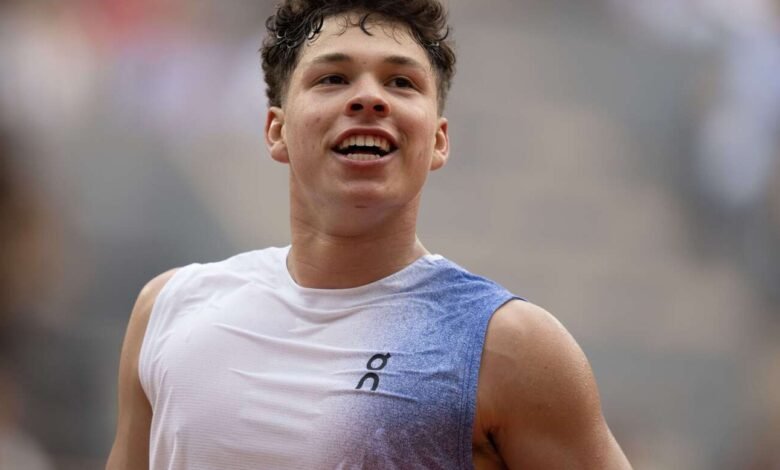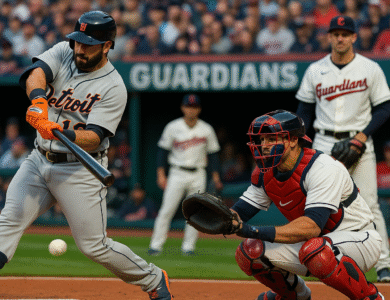
If you’ve been searching for a comprehensive Ben Shelton injury update, you’re in the right place. The American star’s breakout seasons have turned him into a must-watch tennis player, but a sudden left shoulder injury at the 2025 US Open shocked fans and halted his momentum. After a wave of headlines—an on-court retirement, subsequent withdrawals, and plenty of speculation—Shelton has now re-entered the conversation with a carefully managed return to the tour in Shanghai.
This in-depth guide walks you through what happened in New York, what we learned about the injury itself, how his team handled rehab and scheduling, and what his comeback means for the race to ATP Finals qualification. We’ll also unpack tactical adjustments, risk factors, and expectations for the rest of his season—so you can follow every twist without guesswork.
What happened in New York: the moment everything changed
Ben Shelton’s US Open run ended painfully when he retired during a tense third-round battle against Adrian Mannarino. The match was level at two sets apiece when a forehand triggered sharp pain in his left shoulder—pain Shelton later called the “worst he had ever felt”—prompting his first career mid-match retirement on the most significant American stage.
In the days that followed, reports clarified that the issue was specifically a left shoulder problem, not a generalized concern affecting the arm or back. The distinction matters because the kinetic chain behind Shelton’s thunderous left-handed serve—toss, shoulder rotation, and forearm pronation puts unique stress on that joint. Medical timeouts and a brave attempt to continue gave way to an emotional decision to stop, prioritizing long-term health over a single tournament.
The immediate aftermath: withdrawals and a reset
Following the US Open, Shelton and his team opted for caution. He withdrew from multiple events at the start of the Asian hard-court swing—most notably Tokyo (Japan Open)—to allow the shoulder to settle and to rebuild strength and range of motion. Tournament communications and ATP reporting confirmed the withdrawal, framing the choice as a bid to protect the rest of his season.
These decisions drew both concern and praise. On one hand, fans worried about the severity of the problem; on the other, many analysts called it a “smart decision” for a 22-year-old with a long runway ahead.
The Shanghai comeback: controlled, intentional, and high stakes
Fast forward to early October, and the Ben Shelton injury update took a positive turn: he returned to action at the Rolex Shanghai Masters. In pre-tournament comments, Shelton emphasized that he wouldn’t show up unless he believed the shoulder could handle match stress—an encouraging indicator that rehab benchmarks were being met.
Multiple outlets reported his re-entry timeline and context: he’d missed several events after New York. Still, he landed in Shanghai with a first-round bye and a slated opener against David Goffin, a tricky opponent who’d beaten him earlier this year. University of Florida athletics communications and tennis media both confirmed the matchup, staking this comeback against the backdrop of a tight Race to Turin.
Reuters also underscored the bigger picture: with Shelton sitting among the top contenders and eyeing ATP Finals qualification, Shanghai was more than a feel-out event—it was a pressure test for body and ranking.
The injury: why a left shoulder issue hits so hard
The serve-heavy profile
Shelton’s game is built around a big lefty serve and first-strike aggression. That identity places a heavy load on the shoulder capsule, rotator cuff, labrum, and surrounding stabilizers. The serve’s explosive elements—external rotation, scapular control, and deceleration—are especially demanding. Even a minor inflammatory flare in these tissues can rob a player of 5–10% velocity and, more importantly, control.
From pain to pattern
What made the US Open moment so alarming was not just the pain spike but the timing—late in a grinding match when fatigue can expose micro-inefficiencies in mechanics. Media accounts captured the scene vividly: immediate treatment, attempts to adapt, then the decision to retire. That sequence is consistent with acute aggravation layered atop underlying fatigue rather than a slow-build chronic condition—but only the team’s imaging and examination would tell the whole story.
Smart scheduling as treatment
After any acute shoulder incident, the first “treatment” is load management—reducing serves, modifying practice, and holding out of tournaments until the athlete can tolerate high-volume hitting. Shelton’s string of withdrawals, culminating in Tokyo, followed a playbook based on evidence. By pausing competition, the team created space for anti-inflammatory work, progressive strengthening, and careful re-ramping before testing under match conditions in Shanghai.
Rehab and return-to-play: what likely happened behind the scenes
Phase 1: Calm the joint
Immediately after the injury, the goal is to reduce inflammation and pain to restore normal shoulder motion. This typically involves rest from serving, targeted manual therapy, and gentle mobility exercises. For pros, this often includes physio-guided scapular work and isometrics that maintain neuromuscular activation without aggravation.
Phase 2: Rebuild stability and strength
As symptoms subside, the focus shifts to improving rotator cuff endurance, scapulothoracic rhythm, and posterior chain strength. Tennis demands repetitive overhead loading, so programs emphasize external rotators, lower trapezius, serratus anterior, and core-hip integration—everything that keeps the shoulder “stacked” over a robust base during service motion.
Phase 3: Reintegrate the serve
Return-to-serve protocols progress from shadow work and lite tosses to 50–60% velocity reps, then controlled clusters at near-match pace. The checkpoint isn’t just pain-free hits; it’s whether velocity, spin, and placement hold up deep into a session. Pros reintroduce points slowly, often starting with return games and short-serve targets before opening the throttle.
While we don’t have Shelton’s exact physio plan, his statements before Shanghai made one thing clear: he only came back because the team felt the shoulder had cleared confidence thresholds.
Tactical adjustments you may notice during the comeback
First-serve patterns
Expect Shelton to vary locations more and hunt higher-percentage first serves early in matches. If the shoulder is still building endurance, aiming for precise spots at 90–95% effort can win just as many free points as max-speed bombs—especially with his natural lefty angle.
Second-serve spin vs. pace
On the second ball, don’t be surprised if you see a touch more shape and margin down the T on the ad side. That’s a shoulder-friendly way to control rallies without gifting looks to aggressive returners.
Short points by design
Shelton’s first-strike forehand will be central to a shoulder-conscious game plan: big serve, short return, plus-one forehand into open space. If the shoulder feels perfect, the volume rises; if not, he can still manage match load with quick points and selective net rushes.
What the rankings race means now
Before the injury, Shelton was tracking inside the top eight of the PIF ATP Live Race to Turin, chasing a debut at the Nitto ATP Finals. The US Open retirement and the subsequent withdrawals shrank his scheduling margin. That’s why Shanghai matters: it’s one of the final, high-value opportunities to gather points, stabilize his position, and avoid a late-season scramble. Multiple reports framed his return in precisely that context.
If he plays pain-free, even a moderate run can make a significant difference. If he feels any regression, the team will likely keep the long view: protect the shoulder now to prevent a stop-start 2026.
The mental side: composure after a first career retirement
Players often say that the hardest comeback isn’t physical—it’s mental. New York delivered Shelton’s first mid-match retirement at the tour level, under a global spotlight. Re-entering competition after that experience means confronting two shadows at once: the memory of pain and the fear of recurrence.
The best antidote is evidence—multiple pain-free practices, test sets, and the calm that comes from checking every box with the medical staff. Commentary on his decision-making after the US Open has been largely supportive, praising his maturity in listening to his team, even when emotions ran high.
What fans should watch in Shanghai (and beyond)
Serve velocity and late-set zip
Early in the match, Shelton’s serve will likely look explosive. The real tell comes late in sets two and three: Does pop and location hold? Can he still hit the body slice on big points?
Back-to-back days
Back-to-backs are the stealth hurdle in shoulder comebacks. If he plays consecutive days and the serve metrics stay stable, that’s an intense green light.
Scheduling signals
Keep an eye on whether he doubles up with doubles or strategically skips it. Reuters floated a potential doubles run with Alexander Bublik in Shanghai; if that materializes and he handles the extra reps, it will be another confidence data point.
Why this Ben Shelton injury update matters for the bigger picture
Shelton isn’t just another top-10 talent—he’s a needle-mover for American men’s tennis, the kind of electric server-ripper who can light up night sessions and headline stadiums. The US Open exit temporarily dimmed that fire, but the innovative, methodical approach to rehab suggests his team is playing the long game. The Shanghai return is not just a tournament entry; it’s a proof-of-concept that the plan is working.
If the shoulder holds, he can continue adding layers—more aggressive backhand patterns, sharper transition instincts, and perhaps a few strategic serve-volley plays on pressure points—to reduce shoulder load while keeping opponents guessing.
Timeline recap at a glance (narrative)
-
Aug. 29, 2025 — Retires vs. Adrian Mannarino in the US Open third round with acute left shoulder pain; describes it as the worst pain he has felt. First career tour-level retirement.
-
September 2025 — Skips events, prioritizes recovery; later withdraws from Tokyo (Japan Open), signaling a cautious progression.
-
Late September 2025 — Media characterize the choice to pause as prudent for long-term health.
-
Oct. 1–3, 2025 — Returns at the Rolex Shanghai Masters with a first-round bye and a scheduled opener against David Goffin, eyes still on ATP Finals qualification.
Outlook: realistic optimism
Given the public statements, scheduling, and reporting, the tone surrounding Shelton’s comeback is cautiously optimistic. He and his camp appear determined to avoid shortcuts. If Shanghai unfolds with steady serving, efficient holds, and no visible discomfort, expect him to keep tuning up for one final push toward Turin. If there’s any backslide, the imaginative play is the same: protect the shoulder today to preserve the prime years ahead.
Conclusion
The latest Ben Shelton injury update is a balanced one: the scare in New York was real and sobering, but the response—measured, patient, and data-driven—has put him back on court at the right time. In Shanghai, he’s not just testing a shoulder; he’s testing a season-long plan designed to carry him through the finish line and into the elite year-end conversation. Watch the serve, watch the scheduling, and—most of all—watch the confidence. If those three align, the US Open setback will read as a two-page detour in a much longer story.
FAQs
Q: What exactly was Ben Shelton’s injury at the US Open?
He experienced acute left shoulder pain during his third-round match against Adrian Mannarino, leading to his first career mid-match retirement. He later described the pain as the worst he has felt.
Q: Why did he withdraw from events after New York?
To reduce the load on the joint and allow for proper rehabilitation, Shelton withdrew from multiple tournaments, including Tokyo, following communications from the ATP and the tournament that confirmed his decision.
Q: Is he fully fit now that he’s playing in Shanghai?
Pre-tournament comments suggested he wouldn’t enter unless he believed the shoulder could withstand match stress. Return-to-play is a continuum, but Shanghai signals he’s cleared key benchmarks.
Q: What matches should we watch for in his comeback?
He returned at the Rolex Shanghai Masters, drawing David Goffin after a first-round bye. Results there carry extra weight for his ATP Finals push.
Q: How does this affect his ATP Finals chances?
Every Master ‘s-level win boosts his Race to Turin math. Reuters framed his return to Shanghai as pivotal, given the points on offer and the tight race around the cut line.
See More: Notre Dame vs Miami FL Clash of College Football Titans






